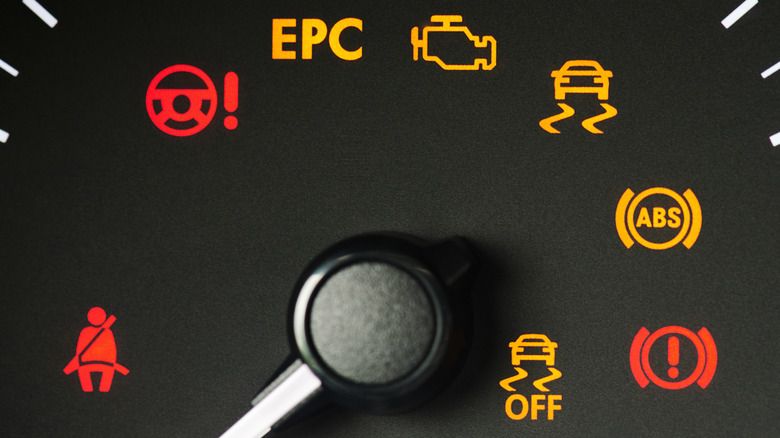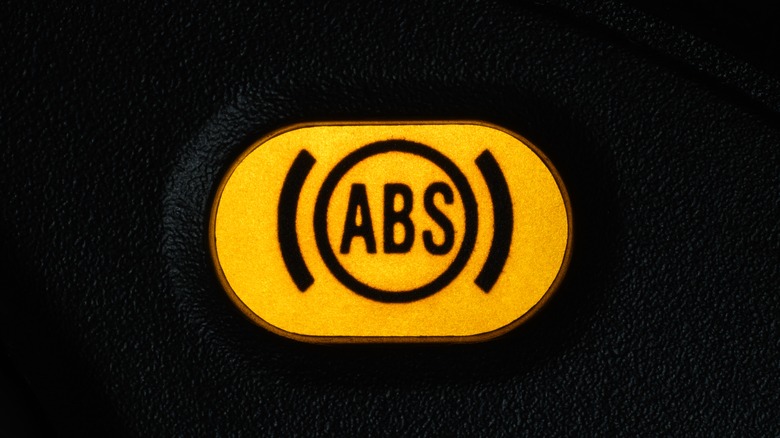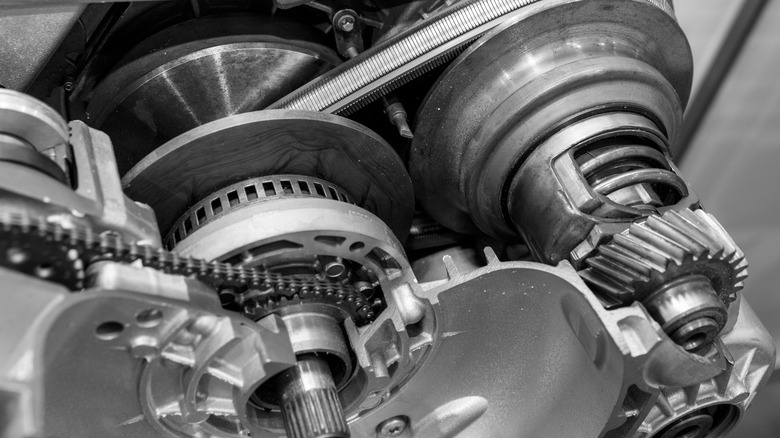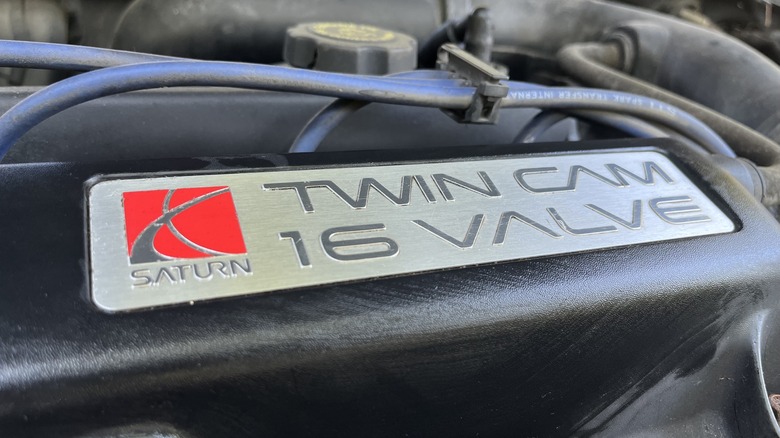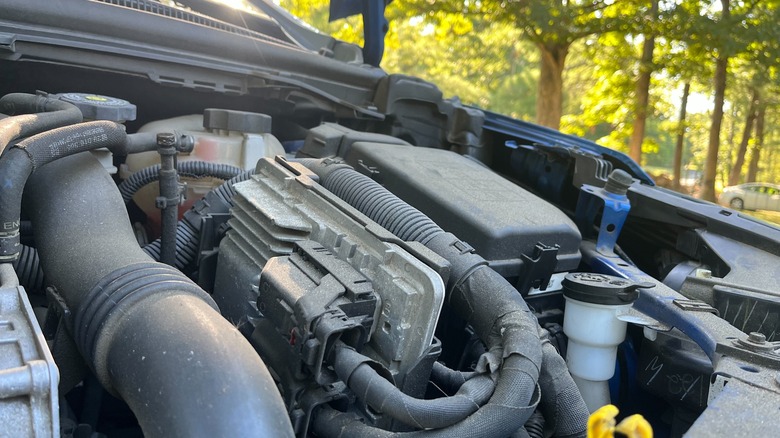7 Important Automotive Acronyms You Should Know
The automotive world can be full of so much technical jargon and acronyms that it even makes an expert's head spin. When shopping for a car, it's important to stay informed, especially as car technology is changing rapidly.
For the average car buyer, rattling off the suspension setup and horsepower ratings for the 2021 Honda Accord Hybrid isn't necessarily that important. But there are a few commonly used acronyms that everyone shopping for a car or someone with an even passing interest in cars should know.
Knowing these acronyms can help you know what that annoying warning light on your dashboard means. It can also help you decipher the options list when looking for a car at the dealership. Becoming well versed in automotive lingo can help you stay up to date on automotive legislation coming out of Washington (such as the new EV tax credits) or stay informed when automotive issues show up in the news.
Anti-lock brakes (ABS) and electronic stability control (ESC)
If you've ever slammed on the brakes to avoid a collision, you've probably noticed the brakes stuttering as you come to a stop. There's nothing wrong with your brakes. They're working exactly as intended to keep you safe. By suddenly and forcefully applying the brakes, sensors in the car's braking system detect wheel speed and apply the brakes in a way that prevents the brakes from locking up entirely, hence the name Anti-Lock Brakes (ABS). It's a simple and often overlooked system that's been standard on many cars for decades and legally mandated on all new cars in the U.S. since 2012, according to Samsara.
On cars made within the last couple of decades or so, ABS works in conjunction with another vital safety system: ESC or Electronic Stability Control (via Kelley Blue Book). ESC uses sensors monitoring your steering and speed to prevent the driver from losing control of the vehicle in either adverse driving conditions like icy roads or when the driver has to steer very quickly to avoid danger. It's another modern safety feature that most people don't even notice.
Continuously variable transmission (CVT)
Mention the acronym "CVT" to any car nut and they'll probably let out a groan.
CVT stands for Continuously Variable Transmission (via HowStuffWorks). Unlike traditional automatic or manual transmissions, CVTs don't have "gears" in the traditional sense. It's built in such a way to allow for smooth and efficient delivery from the engine to the wheels. It's often maligned by car enthusiasts for a few reasons, not the least of which is speed. For the most part, CVTs sacrifice quick acceleration in favor of efficiency.
That's not a bad thing if you aren't a speed demon and prefer economically focused cars. They aren't going to win any drag races, but it's hard to argue with superior fuel economy. CVTs are best suited for highway driving and are perfectly adequate for most drivers who aren't trying to shave fractions of a second off a lap time. Just don't tell any of your car nut friends.
Dual-overhead camshaft (DOHC) and single-overhead camshaft (SOHC)
In order to ensure a proper air mixture in an engine, valves are utilized at the top of each cylinder. Controlling those valves is a camshaft. The camshaft spins when the engine is running to control valves that let air into the engine to aid in combustion and let out subsequent exhaust gases (via CarParts.com).
With a few exceptions, new engines generally come in two flavors: engines that utilize a Single-Overhead Camshaft (SOHC) and those that use a Dual-Overhead Camshaft (DOHC). SOHC engines are generally more simply laid out and can run more efficiently than some other DOHC engines. Honda still uses SOHC engines to great effect in their lineup. But SOHC engines are often not the best choice for high-horsepower applications as there can only be two or three valves per cylinder.
On the other hand, DOHC engines often make more horsepower out of smaller displacement engines than SOHC configurations. DOHC configurations allow for up to four valves per cylinder. Sadly, that extra power can come at the expense of complexity, adding even more parts that can fail. All the same, most manufacturers have gone with a DOHC setup for the vast majority of their engines.
Electric vehicle (EV) and Internal combustion engine (ICE)
Whether the world is ready or not, electric vehicles (EVs) are here to stay, and sooner or later, they are likely going to be the norm. One can scarcely mention EVs without mentioning Tesla. Despite some quality control issues, and the goofy antics of Elon Musk, Teslas have almost become the name of the game when it comes to EVs. Much larger manufacturers like Ford with the F-150 Lightning EV truck and Chevy with the Bolt EV and upcoming Equinox EV hope to dethrone Tesla with their practical and more inexpensive electric offerings.
Most vehicles on the road today use ICEs (Internal Combustion Engines). That's just a regular pedestrian gas engine. They are a relic of the past to some and a vibrant beating heart of any self-respecting vehicle to others. Countries like Norway are considering a ban on sales of gas-powered cars by 2025. Meanwhile, California looks to ban all combustion-powered lawn care equipment. You could say the writing is on the wall for gas-powered motors.
Electronic control unit (ECU)
Inside just about every modern car are several electronic "brains" or components that control all the vital car functions, from the aforementioned ABS and ESC system to the air conditioner and headlights (via YourMechanic). Such a brain is called an ECU (Electronic Control Unit). ECUs have evolved from clumps of wires and relays under the dash in old cars to incredibly complex computerized systems in newer cars. Without an ECU, your car wouldn't function correctly at all. It acts as a conductor to the orchestra that is your vehicle's different components.
Some gearheads have even taken to modifying the ECUs in their car to get the maximum amount of engine performance. Those mods often come at the expense of decreased fuel economy and may void any kind of remaining manufacturer engine warranty. But sometimes that gamble is worth it in the name of speed.
Armed with the knowledge of these vital automotive acronyms, you can get a leg up on automotive news, be more aware of your vehicle's vital functions, and have the maximum amount of information the next time you buy a car.
